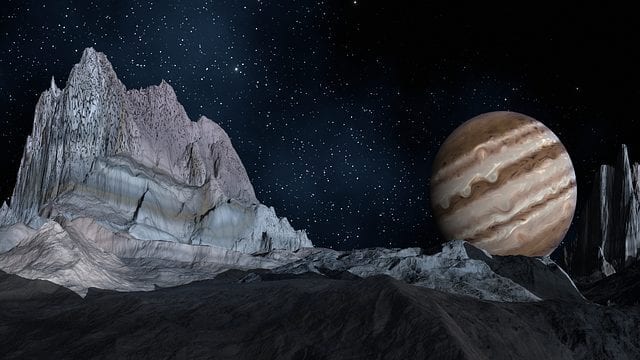Jupiter’s a fascinating planet! It’s truly enormous, and it’s perhaps best known for its big red spot. However, how’s your knowledge on this stunning gas giant? Did you know that its magnetic field is almost unbeatable? How does Jupiter affect life on Earth? Get ready to be surprised – here are some fun facts about Jupiter worth remembering.
1. We can’t overstate the size of Jupiter.
Jupiter is – and we mean it – mind-boggling huge. It’s eleven times the width of our own planet! That means it’s got a stunning radius of around 69,911km – who’s managed to measure it, honestly?
2. Could life ever persist on Jupiter?
It’s not possible for life as we know it to exist on Jupiter. However, that’s ‘as we know it’ – who knows what lurks below the gas surface?
3. Can you land on Jupiter?
Current studies suggest this would be impossible because there is no firm or stable ground on Jupiter. It’s completely gas – and if you tried to land on it, you’d be crushed by the atmosphere. Thankfully, no one’s dared try it yet…
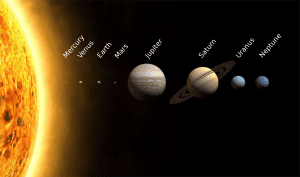
4. We really, really need Jupiter around.
Jupiter influences the security of Earth! It helps protects us by deflecting heavenly matter away from tumbling in our direction. This is due to the powerful magnetic field of Jupiter attracting otherwise loose matter.
5. It’s got pulling power!
Jupiter’s magnetic field is absolutely astounding. Only the Sun, in our known solar system, has a larger magnetic pull.
6. Can any of Jupiter’s moons host life?
Research has shown that of all the moons of Jupiter, Europa is the one most likely to support life forms! Again – that’s life as we know it…
7. It’s freezing up here!
Jupiter’s much colder than you probably think, despite its red, orangey colours. It’s thought to be around -238 F here on average – that’s instant freezing to death!
8. Now, seriously, about that magnetic field…
Jupiter is sometimes called the vacuum cleaner of the solar system because it attracts loose matter. Its magnetic field extends between 600,000 and 2 million miles!
9. Doesn’t Jupiter have an ocean?
There is an ocean on Jupiter but it is not made of water! It is in fact the largest ocean in the solar system. Instead of water, this ocean is made of hydrogen!
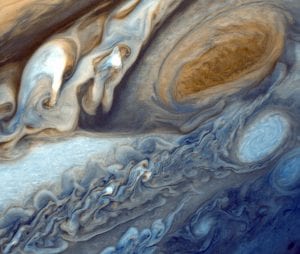
10. NASA’s tried to learn more about Jupiter.
Between the years 1979 and 2007 NASA undertook several exploratory missions to learn much more about this planet. However, we’re still to discover its secrets. It’s a mysterious one!
11. We’ve sent plenty of planetary probes.
Pioneer 10, Pioneer Saturn, Voyager 1, Voyager 2, Ulysses, Galileo, Cassin and New Horizons all set sail to explore the big red giant.
12. Collect calls from Jupiter!
Radio waves from Jupiter can reach Earth. They are completely inaudible to human ears but can be recognised by special receivers.
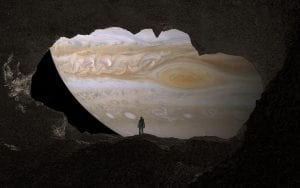
13. Big but agile!
Despite its huge size Jupiter moves very quickly. It achieves a whopping 28,148 miles per hour! That is equivalent to 45,300 kilometres per hour.
14. It’s not completely round.
Jupiter is not a perfect sphere. Due to the speed of its orbit, it bulges in the middle, thanks to its equator.
15. About that big red spot…
The red spot on Jupiter has a diametre of 24 kilometres or 15 miles. It is based just south of the Jupiter equator. Studies suggest that it was caused by a drastic storm – it is so vast, calculations suggest that it could contain three spheres of the size of Earth!
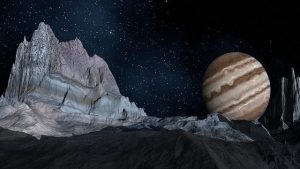
FAQs about Jupiter
When was the red spot first discovered on Jupiter?
Remarkably, the red spot was first discovered by Giovanni Cassini, an Italian astronomer , in 1665.
What has formed the clouds surrounding Jupiter?
Ammonium crystals have formed the clouds surrounding Jupiter. They reach up to 50 kilometres or 31 miles in thickness. Beneath them are clouds of hydrogen and helium.
How long does a day last on Jupiter?
Much quicker than it might on Earth! A day on Jupiter lasts 9 hours 56 minutes - how would you ever get anything done?
Do you know any fun facts about Jupiter? Share them in the comments below!
Are you fascinated with the solar system? Check out these amazing facts about the Sun
